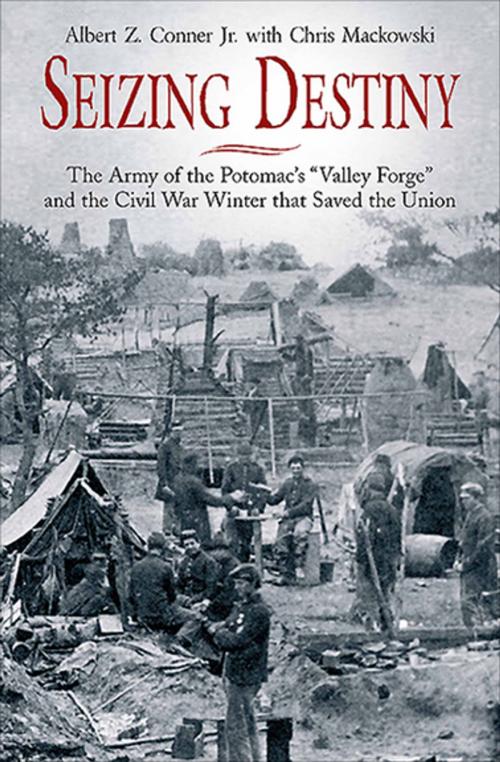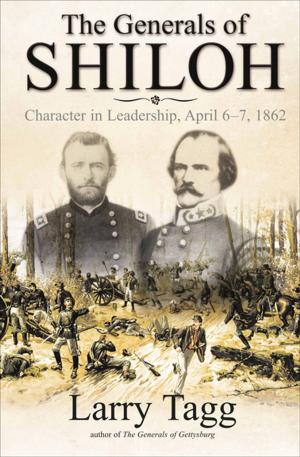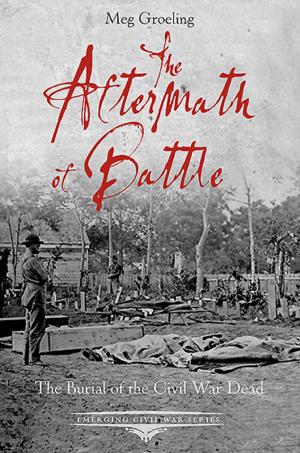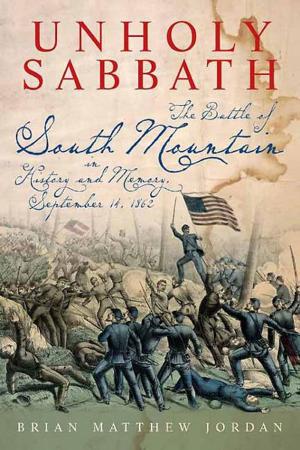Seizing Destiny
The Army of the Potomac's "Valley Forge" and the Civil War Winter that Saved the Union
Nonfiction, History, Americas, United States, Civil War Period (1850-1877)| Author: | Albert Z. Conner Jr., Chris Mackowski | ISBN: | 9781611211573 |
| Publisher: | Savas Beatie | Publication: | April 30, 2016 |
| Imprint: | Savas Beatie | Language: | English |
| Author: | Albert Z. Conner Jr., Chris Mackowski |
| ISBN: | 9781611211573 |
| Publisher: | Savas Beatie |
| Publication: | April 30, 2016 |
| Imprint: | Savas Beatie |
| Language: | English |
How fighting Joe Hooker turned things around during a low point in the Civil War: “Exceptionally well-written . . . the result of painstaking research.” —Brig. Gen. John W. Mountcastle, USA (ret.), former chief of military history, US Army
Depression. Desertion. Disease. The Army of the Potomac faced a trio of unrelenting enemies during the winter of 1863. Following the catastrophic defeat at the battle of Fredericksburg, the army settled into winter quarters—and despair settled into the army. Morale sank to its lowest level while desertions reached an all-time high. Illness packed the hospitals. Political intrigues, careerist schemes, and harsh winter weather demoralized everyone. Even the army’s livestock suffered, with more than 1,000 horses and mules dying every week.
Then Maj. Gen. Joseph Hooker, a pugnacious tactician aptly nicknamed “Fighting Joe,” took command of the army. And a remarkable thing happened: A man known for his hardscrabble battlefield tenacity showed an amazing brilliance for organization and leadership. With Chief of Staff Dan Butterfield working alongside him, Hooker rebuilt the army from the bottom up. In addition to instituting logistical, ordnance, and administrative reforms, he insisted on proper troop care, rigorous inspections, and battle drills. Hooker doled out promotions and furloughs by merit, conducted large-scale raids, streamlined the army’s command and control, and fielded a new cavalry corps and military intelligence organization.
Hooker’s war on poor discipline and harsh conditions revitalized a dying army. During this ninety-three-day resurgence, the Army of the Potomac reversed its fortunes and set itself on the path to ultimate victory. Hooker’s achievement represents nothing less than the greatest non-battle turning point since Valley Forge in the American Revolution—through it has long gone unnoticed or underappreciated by modern historians.
Based on soldiers’ records, diaries, and letters, from the lowest private to the highest general, this is the full story of how these citizen-soldiers overcame adversity, seized their destiny, and saved the nation.
How fighting Joe Hooker turned things around during a low point in the Civil War: “Exceptionally well-written . . . the result of painstaking research.” —Brig. Gen. John W. Mountcastle, USA (ret.), former chief of military history, US Army
Depression. Desertion. Disease. The Army of the Potomac faced a trio of unrelenting enemies during the winter of 1863. Following the catastrophic defeat at the battle of Fredericksburg, the army settled into winter quarters—and despair settled into the army. Morale sank to its lowest level while desertions reached an all-time high. Illness packed the hospitals. Political intrigues, careerist schemes, and harsh winter weather demoralized everyone. Even the army’s livestock suffered, with more than 1,000 horses and mules dying every week.
Then Maj. Gen. Joseph Hooker, a pugnacious tactician aptly nicknamed “Fighting Joe,” took command of the army. And a remarkable thing happened: A man known for his hardscrabble battlefield tenacity showed an amazing brilliance for organization and leadership. With Chief of Staff Dan Butterfield working alongside him, Hooker rebuilt the army from the bottom up. In addition to instituting logistical, ordnance, and administrative reforms, he insisted on proper troop care, rigorous inspections, and battle drills. Hooker doled out promotions and furloughs by merit, conducted large-scale raids, streamlined the army’s command and control, and fielded a new cavalry corps and military intelligence organization.
Hooker’s war on poor discipline and harsh conditions revitalized a dying army. During this ninety-three-day resurgence, the Army of the Potomac reversed its fortunes and set itself on the path to ultimate victory. Hooker’s achievement represents nothing less than the greatest non-battle turning point since Valley Forge in the American Revolution—through it has long gone unnoticed or underappreciated by modern historians.
Based on soldiers’ records, diaries, and letters, from the lowest private to the highest general, this is the full story of how these citizen-soldiers overcame adversity, seized their destiny, and saved the nation.















